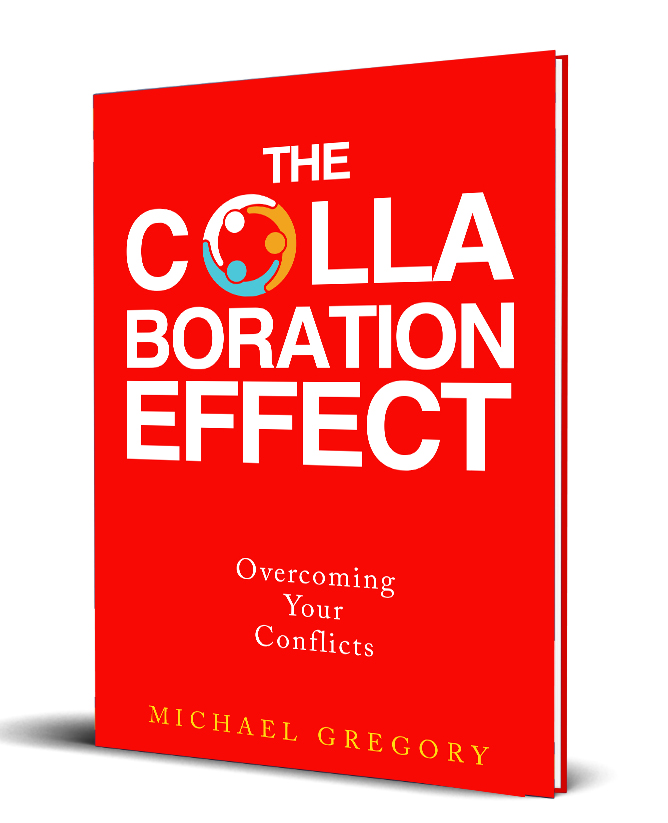
How much should you trust the other party in a negotiation. If you trust to much chances are you may be burned. If you don’t trust enough chances are you may lose out on a great opportunity. The old adage trust, but verify makes sense. It is necessary to verify how much trust may be appropriate.
What is trust?
Trust is an ”assured alliance on the character, ability, strength, or truth of someone or something”
according to the Merriam-Webster dictionary. Standing back and looking at this definition when involved with a negotiation, how sure are you that you and the other party have an assured alliance? You can start by conducting research on the other party. Your background research is critical to more quickly finding ways to bond and empathize with the other party.
Background on other participants
The Collaboration Effect ® incorporates connecting relationships as one of the key factors towards developing collaboration.
To build a connecting relationship several alternatives maybe explored. For example, call the other party ahead of time or ask to meet with them for coffee just to have an informal interaction to learn more about each other. As another alternative consider tapping your network with others that know the other party to gain additional insights. Ask them about their experiences and how they assessed the other party. Conduct on-line research to learn more about interests, hobbies, history, and background of the other party. Explore all social media alternatives that may be applicable (Facebook, LinkedIn, Twitter, SnapChat etc.)
The more you know about the other party the greater your probability of success.
Knowing more about the other party enhances your ability to relate and empathize with them. Relating to each other builds trust. By comparison not knowing about the other party, and not being able to relate to them may cause greater cynicism. Ignorance promotes distrust. It should be your intention to build an assured alliance with the other party by doing your homework by gaining all the knowledge you can about the other party.
Assured alliance
An assured alliance implies a given character of the other party.
There is a degree of acceptance in the statements offered by both sides being honest.
Generally, each party believes until proven wrong that the statements being offered are honest. They reflect the truth. However, the truth may not be the whole truth and the truth may have a slant towards a given position. This gives rise to further open-ended questioning to explore interests to uncover the truth. Character means a lot in a negotiation. Let’s look at how one may assess character.
Assessing character
Style
We all have various communication styles that we use at work, at home and in other venues.
For example, we assess how well the other party listens. If the other party does most of the talking this may imply that the other party is not the best listener. This may also imply that the other party prefers to dominate the conversation. As a result, you may have second thoughts about working with this person.
When you meet someone new you quickly asses whether you may like or dislike that person. To enhance the probability of success you may have to adapt your style to make the other party feel more comfortable. The more the participants feel accepted, listened to and at easy the greater the probability of success in a negotiation.
Communication
The attitude associated with communication involves the words, the tone and body language. Body language may be broken down into both facial expressions and body movements. It is believed that
the attitude in communication stems from 7% words, 38% tone and 55% body language.
Knowing this information, it is important to assess as much of these items as possible.
The negotiation over email or a text only provides us with the words. It is true that emojis may provide additional insights. It is also true that sometimes the emoji sent is not necessarily the one that is received. This can potentially cause additional miscommunication. In a conversation on the phone there is further enhancement. With the phone call both the words and the tone can be included. Clearly the best way to assess the attitude during a negotiation is face to face. Face to face incorporates not only the words and tone, but also the body language of the other party. In a face to face negotiation it is more likely to read the other party and assess the level energy in the room.
How much energy is being expended by each side?
By exploring your energy level and their energy level it is possible to determine how well the negotiation is going and what actions may be necessary.
How does the other party react with or in reaction to others in the room? Is the person more engaged of quieter based on what just took place? How vocal or reserved is the other party? The conversation may be more free spirited and animated making everyone at ease. On the other hand, the room could become tense reflecting a nervousness and apprehension. Next we will look at the typical characteristic pattern of a negotiation. By being conscious of the energy level you can take actions to keep the focus on the problem and be soft on the people.
Typical pattern in negotiations
Research from the Harvard Program on Negotiation indicates a typical behavior in a negotiation has the following characteristics.
- Negotiators care about the outcome of others. That is, we appreciate win-win solutions. When this is the case everyone feels better.
- Negotiators care about their reputations. After the negotiation the negotiators want to be thought of as being fair, equitable and honest. In some instances, the negotiator may even be willing to give up some elements in the negotiation to be perceived as being fair.
- Integrity is reciprocal. The hope and indeed the expectation are that if I am honest with you, you are honest with me.
- Negotiating closure is viewed positively. The lack of an agreement is viewed as failure. We all appreciate a completed deal. Working on a negotiation and not having it come to pass is frustrating for all involved.
Given these typical behaviors it behooves a good negotiator to understand these points. Continually asses these points during the course of a negotiation. Strike an appropriate balance between trust and cynicism.
Balance
As indicated above there is a balance between trust and distrust. Sometimes it is very difficult to determine whether it is possible to trust the other party. All would agree it is necessary to explore interests. With open ended questions this enhances the possibilities of greater understanding. It may be possible to understand underlying motives.
Only when we fully understand motives is it possible to work towards an optimal negotiated agreement.
When we understand how the other party looks at the negotiation we can respond accordingly. We need to understand their position and their underlying interests. When that happens, we can work together. Working together in this manner it is possible to build trust and come up with a mutually acceptable solution.
When trust is forthcoming, value is added to a negotiation. Each party sees the value of making the pie bigger rather than simply trying to carve out a larger portion of a fixed pie.
About the author
Mike Gregory is an expert on conflict resolution and in application of The Collaboration Effect ® with the IRS, business to business, and within businesses. Mike is an international speaker. Mike has written 11 books including Business Valuations and the IRS: Five Books in One, The Servant Manager and Peaceful Resolutions. Mike may be contacted directly at mg@mikegreg.com and at (651) 633-5311. [Michael Gregory, ASA, CVA, NSA, MBA, Qualified Mediator with the Minnesota Supreme Court]
About the author
Mike Gregory is a professional speaker, an author, and a mediator. You may contact Mike directly at mg@mikegreg.com and at (651) 633-5311. Mike has written 12 books (and co-authored two others) including his latest book, The Collaboration Effect: Overcoming Your Conflicts, and The Servant Manager, Business Valuations and the IRS, and Peaceful Resolutions that you may find helpful. [Michael Gregory, ASA, CVA, MBA, Qualified Mediator with the Minnesota Supreme Court]

